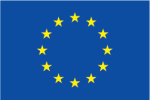In our last blog we told you about the three H2020 INTEGRITY SPOCs (Small Private Online Course) that have gone live. We are excited to announce that we are currently designing another online course called a MOOC (Massive Open Online Course). This blog will explain why a new MOOC is a useful addition to the SPOCs and take you along the design process.
First things first, what is a MOOC exactly and how does it differ from a SPOC? A MOOC is a free open access course with no limit to the number of participants. MOOCs are an accessible way for thousands of people from all over the world to follow a course simultaneously. The learning activities in a MOOC are specifically designed to be suitable for a large number of participants, for example by including built-in feedback. The main difference between a MOOC and a SPOC is that a MOOC is aimed at a much wider audience. In addition, unlike a SPOC, a MOOC does not require intensive guidance from an instructor.


Hello, where is this MOOC available? I can’t seem to find it on your website.